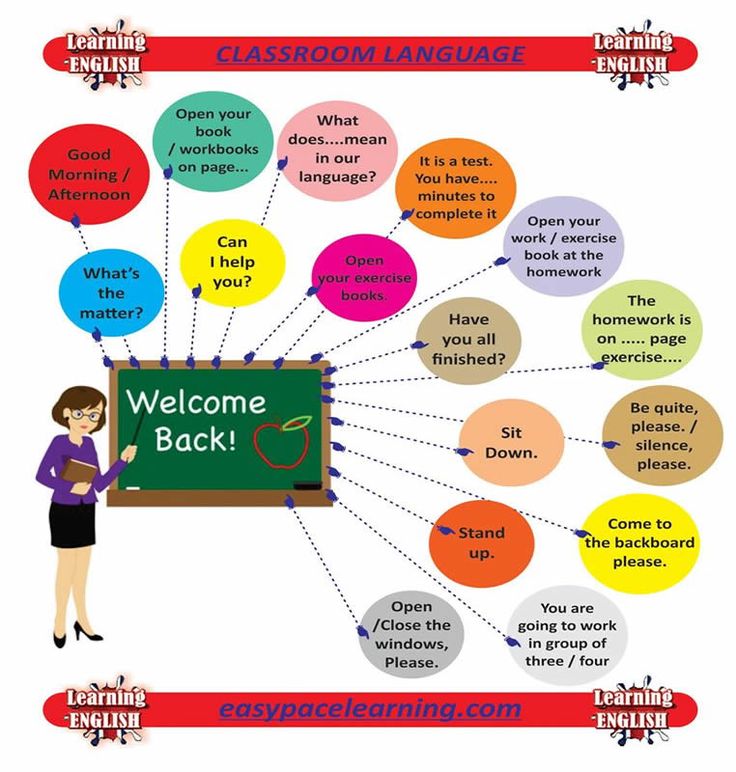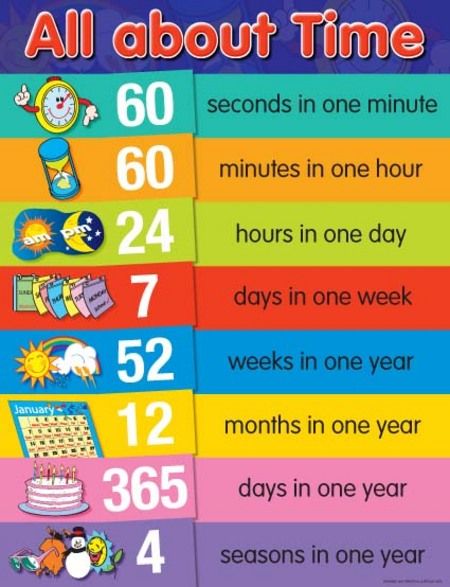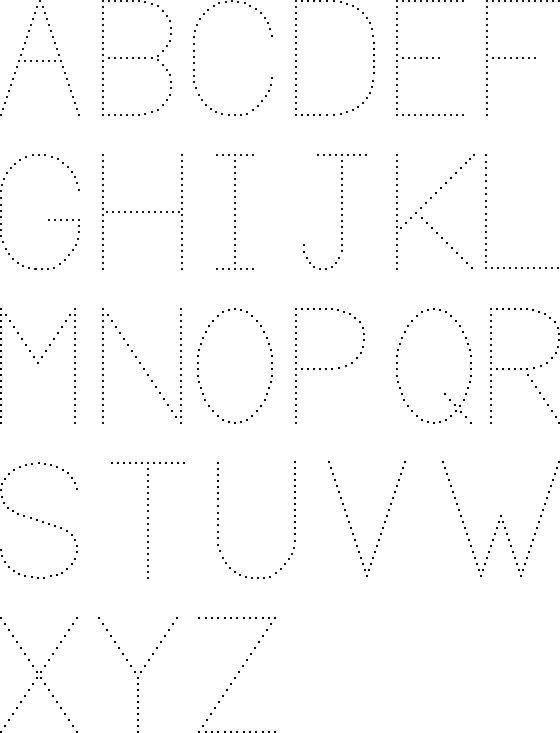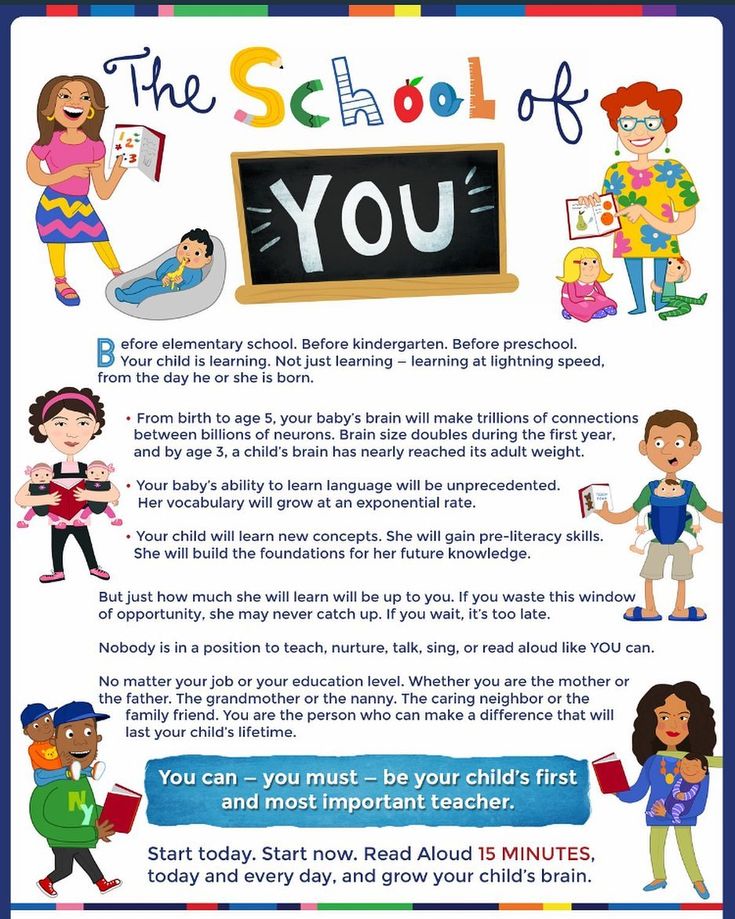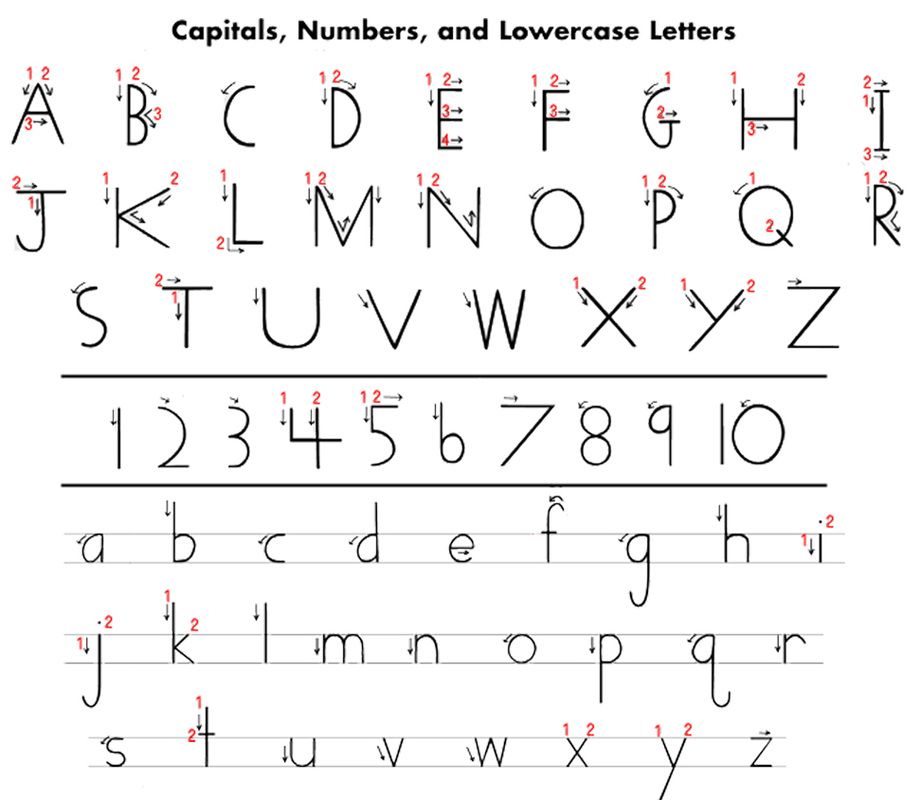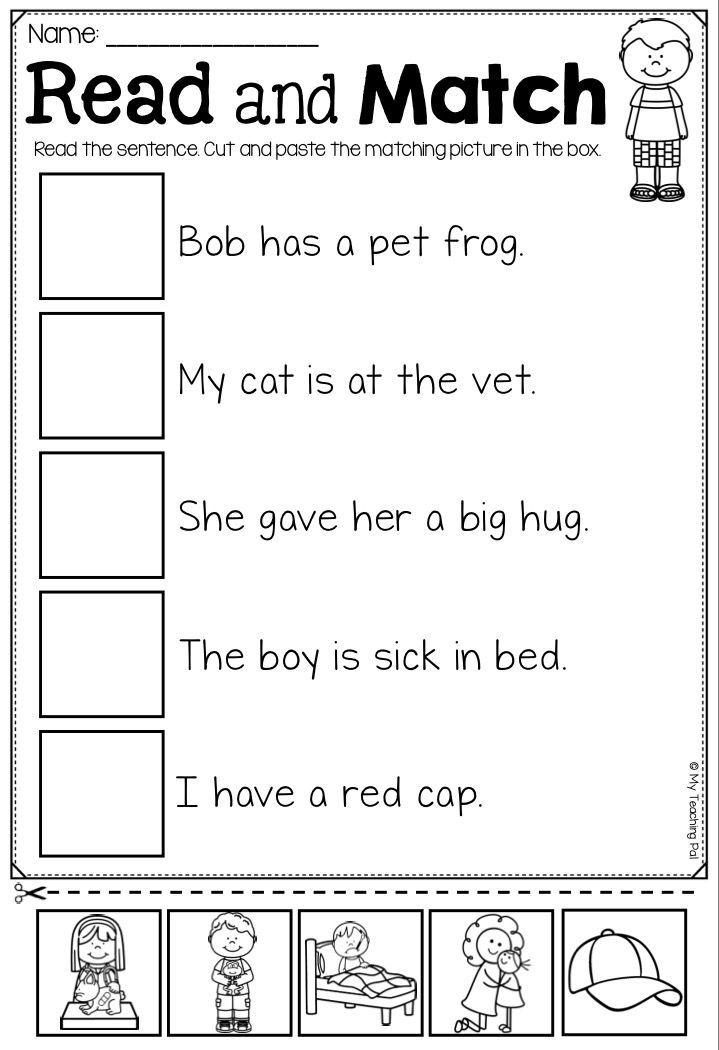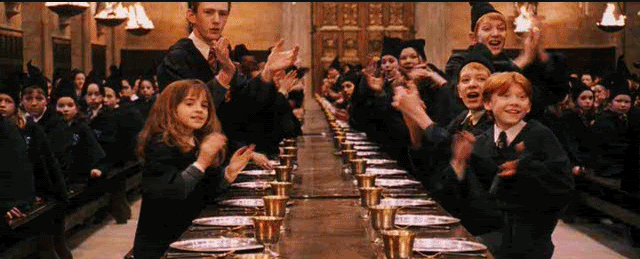What age do kids learn abcs
At What Age Should a Child Know the Alphabet?
As children grow, they naturally hit learning milestones. One of the most critical educational milestones a child must reach is learning the alphabet, which prepares them for reading and writing.
But at what age should a child know the alphabet?
In this article, you will learn at what age a child should know how to recite the alphabet, recognize and write individual letters, learn letter sounds, and eventually learn how to read. Read on to make sure your little one is on the right track!
At What Age Should a Child Know the Alphabet?
Recitation
Typically, by the age of three, children should be able to recite the alphabet. However, every child is different. Some toddlers may learn in their twos, and others might not pick it up until the late threes.
Children generally learn how to recite the alphabet through repetition. If you sing the ABC song to your kids often, they are more likely to pick it up quicker, just as they would any song.
Recognition
Most children can recognize letters between the ages of three and four. Most kids will recognize the letters in their name first.
For example, a boy named Jace will probably be able to remember what the letter “J” looks like as well as recognize most other letters in his name. Similar to alphabet recitation, use repetition to teach your children about recognizing individual letters. You may ask them, “What letter is that?” whenever you see an isolated letter.
Writing
By ages four to five, children will start writing letters. Children will learn to write the alphabet in preschool and kindergarten, but it may be beneficial to have your child practice writing his/her letters at home. Most children at this age know that written symbols represent messages and may be interested in writing on their own. One of the easiest ways children learn how to write letters is to begin tracing them.
Additionally, teaching your child how to write his/her name is an important step that will ultimately help them become familiar with writing the rest of the alphabet.
Sounds
By five years old, children will start to associate letters with their accompanying sounds , otherwise known as phonics. In other words, around the age of five, children should be able to reason that the word “book” starts with the letter B.
Children begin learning phonics in kindergarten, which is a vital step to decoding written text and begin reading.
Reading
By six years old, first graders should be able to read words aloud with ease. For the most part, children can recognize sight words and their names. Moreover, children can decode some words by sounding out their letter combinations.
By second grade, a child should be able to sound-out a simple book. By the third grade, your child should be able to read independently and fluently. By this point, your child should be a master of the alphabet and is ready to master the art of reading!
What If Your Child Isn’t Learning at the Rate S/He Should?
It’s important to remember that every child is different and may learn at a different rate. If your child isn’t learning the alphabet at the pace s/he should, one reason may be because s/he isn’t interested or is simply undergoing a minor setback.
If your child isn’t learning the alphabet at the pace s/he should, one reason may be because s/he isn’t interested or is simply undergoing a minor setback.
However, if your child is falling severely behind, it’s important to find out if your child truly has a problem learning or if it is nothing to worry about. Therefore, work one-on-one with your child to determine if there is a problem. For example, practice reading and writing with your child. If s/he is having a hard time comprehending the instruction or if it’s taking him/her an abnormally long time to do the task, consider talking with your child’s teacher about it.
In the end, if you suspect your child might have a reading or learning disability, discuss it with a doctor. If your child is truly suffering from a reading disability, it can cause him/her to fall behind in his/her education. The sooner you seek help, the sooner you will be able to find a solution that works for your precious little one!
Learn the Alphabet at a Top-Tier School!
So at what age should a child know the alphabet? Learning the alphabet is an ongoing process.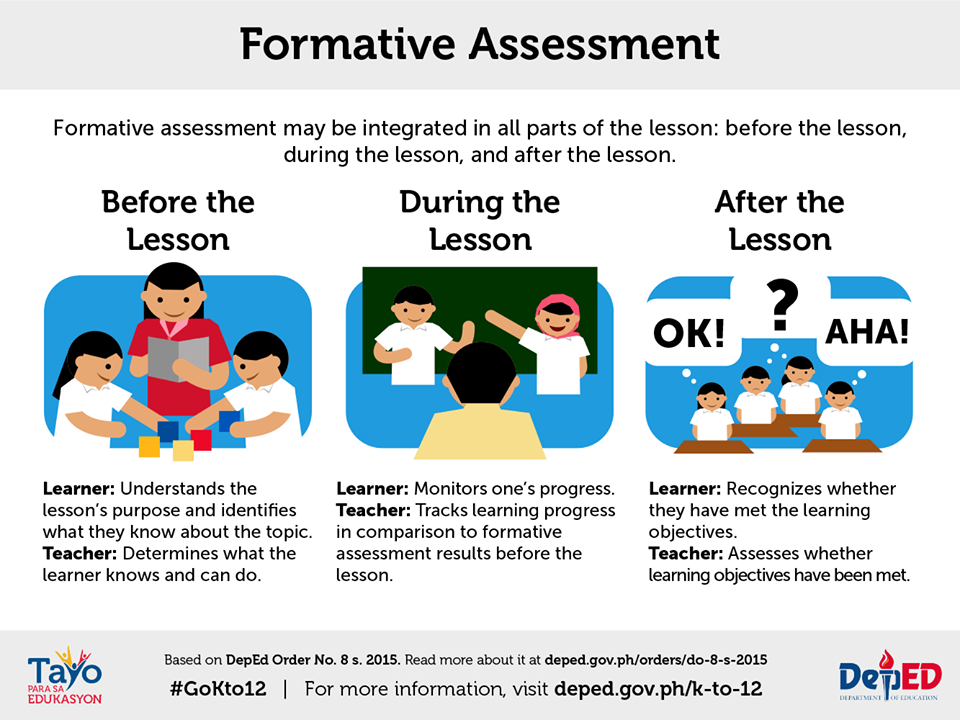 That being said, it’s crucial to enroll your little one in a school that will not only teach him/her but also helps develop in him/her a love of learning.
That being said, it’s crucial to enroll your little one in a school that will not only teach him/her but also helps develop in him/her a love of learning.
Smaller Scholars Montessori Academy helps children become more confident, creative, and independent through the acclaimed Montessori experience. You can enroll your child in the toddler program, which is for kids between the ages of eighteen months and three years, or in the primary program, for children between three and six years. In both programs, children have a rich classroom environment in which they are encouraged to explore, learn, and thrive. Then, as children grow older, they can explore the elementary program for kids up to twelve years old.
What are you waiting for? Ensure your child learns the alphabet and how to read by enrolling your child in Smaller Scholars Montessori Academy! Contact them to learn more.
When Do Kids Learn The Alphabet?
Children typically start learning the alphabet around 2-3 years old.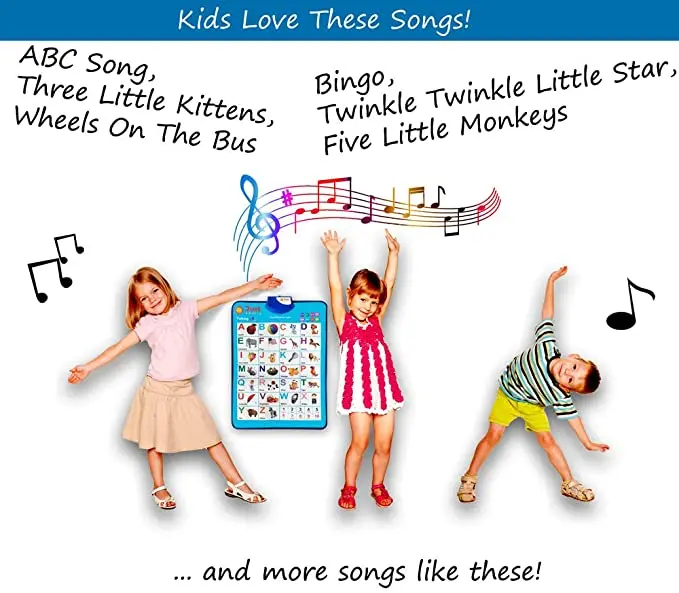 Some typically start learning their…
Some typically start learning their…
Children typically start learning the alphabet around 2-3 years old. Some typically start learning their ABCs between 3-5 years old, but it can be as late as 7 or 8 years old for some kids. So there’s no set age for this milestone. New research shows that by the time they are 2 years old, most kids have already learned how to recognize many alphabet letters.
Now researchers at the University of Washington’s Institute for Learning & Brain Sciences (I-LABS) have conducted a study showing that most toddlers learn letter names long before they can identify them on their own.
If as a parent, you are wondering when your child learn their alphabet. Then relax. They may have started their learning process without your knowing. Thinking how? Well, your child may have started looking at all the letters and pictures in books, on signs, and in magazines for a while now. They may know some of the letters like A-D but they still struggle to figure out what all of the other ones are. This is completely normal because it can take most children anywhere from 18 months to 3 years to become fluent readers!
This is completely normal because it can take most children anywhere from 18 months to 3 years to become fluent readers!
The best thing you can do as a parent is to help your little one in the learning process so that they can practice recognizing words and sounds. You should also have them write down what they see on signs or labels too!
The ABCs are the first letters of the English alphabet. They help us learn to read, write and spell. The ABCs is an educational game for kids aged 3-8 years old where parents can choose what level of difficulty they want to play on – easy, medium, or hard. It’s a fun way for kids to learn their alphabet!
The ABCs are a set of 26 individual letters that represent the most common sounds in English. The alphabet is used to teach kids how to read and spell words, so they need to know what the ABCs are! An alphabet is a set of symbols or individual letters which represent speech sounds (phonemes) in languages with alphabetic writing systems like English.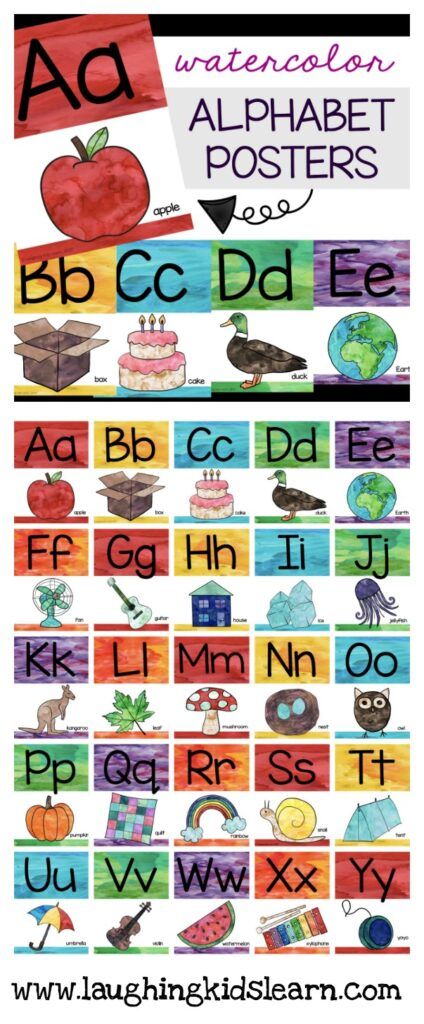 There are several different types of alphabets including Latin, Cyrillic, Hebrew, Arabic, and Japanese kanji scripts. All these languages use at least one type of alphabet because each letter represents a phoneme (or sound).
There are several different types of alphabets including Latin, Cyrillic, Hebrew, Arabic, and Japanese kanji scripts. All these languages use at least one type of alphabet because each letter represents a phoneme (or sound).
At what age parents can teach the kids the alphabet?
The alphabet is not taught until around kindergarten. Kids learn the alphabet easily when recognize letters with pictures of objects. Kids first learn uppercase letters, then lowercase letters. When kids are first learning the alphabet, they may not be able to read it yet but will associate it with certain sounds or shapes.
Students should know their ABCs before they enter 1st grade because that’s when they start reading books in school that have words spelled using more than one letter at a time.
Timeline of kids learning the alphabet
1. A child’s first steps in learning the alphabet happens when they are between 18 months and 2 years old.
2. Kids learn all the letters by recognizing their shapes, and sounds.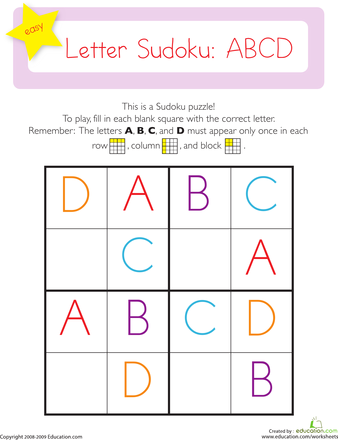
3. When kids are about 3 or 4 years old, they start to recognize that there is a connection between letters and words.
4. Around age 5 or 6, children will be able to read books on their own without any help from an adult.
5. Kids usually finish learning the alphabet by around 7-8 years of age.
6. In kindergarten classrooms, students typically start with letter recognition before moving on to reading simple sentences aloud.
If your child has not started learning the alphabet, then it could be any developmental issue or learning disability. In this case, one should prefer a doctor. Further parents can help their children learning alphabets with the help of phonics.
The word “phonics” is often misunderstood. It does not refer to sounds but rather the teaching of letter-sound relationships and patterns.
What is phonics?
Phonics is a way of teaching language by breaking it down into smaller, easier-to-understand parts. It teaches reading and spelling skills by blending the sounds that makeup words together to form those words.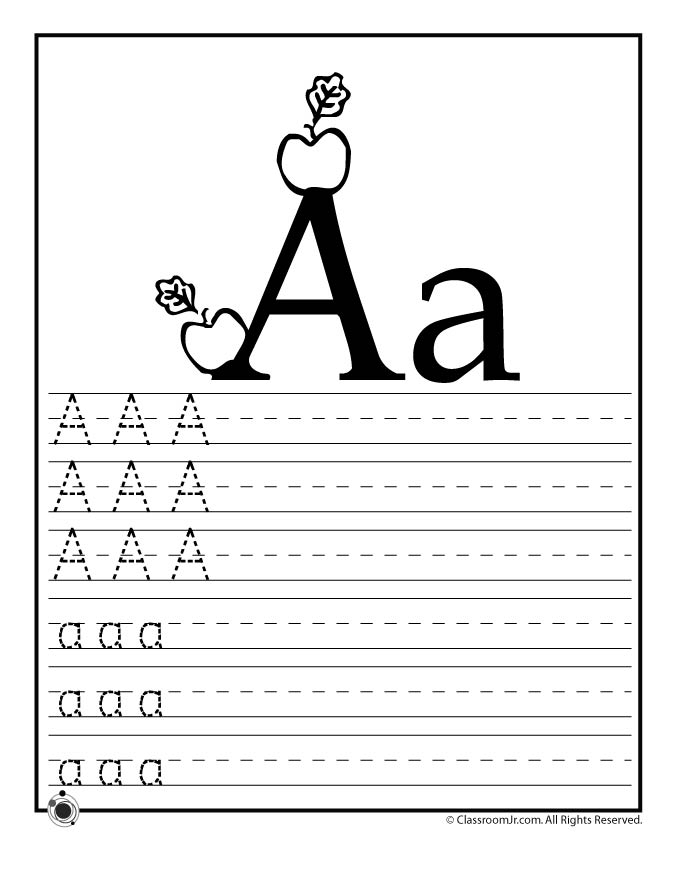 It is the process of learning how to read new words by sounding them out. Children become competent readers when they can use phonics skills with ease, but it often takes time and practice before children develop these skills.
It is the process of learning how to read new words by sounding them out. Children become competent readers when they can use phonics skills with ease, but it often takes time and practice before children develop these skills.
Phonics is a system of reading and writing that builds on the letters in our alphabet, each one representing a sound. For example, “a” letter sounds “ahh” sound when we say it out loud. Phonics introduce letters, teaches kids learning letters by sounding them out and figuring out what they represent.
Children who are taught phonics usually do better in school than those who aren’t. It helps them learn quickly and easily without getting frustrated. It’s also much easier for children with dyslexia to learn phonics rather than memorizing whole words or trying to figure out what something says by looking at its shape alone!
Why is learning the alphabet important?
The alphabet is one of the most important things to learn for children. The reason kids need to know their letters is so that they can read and write, which are both very important skills in life.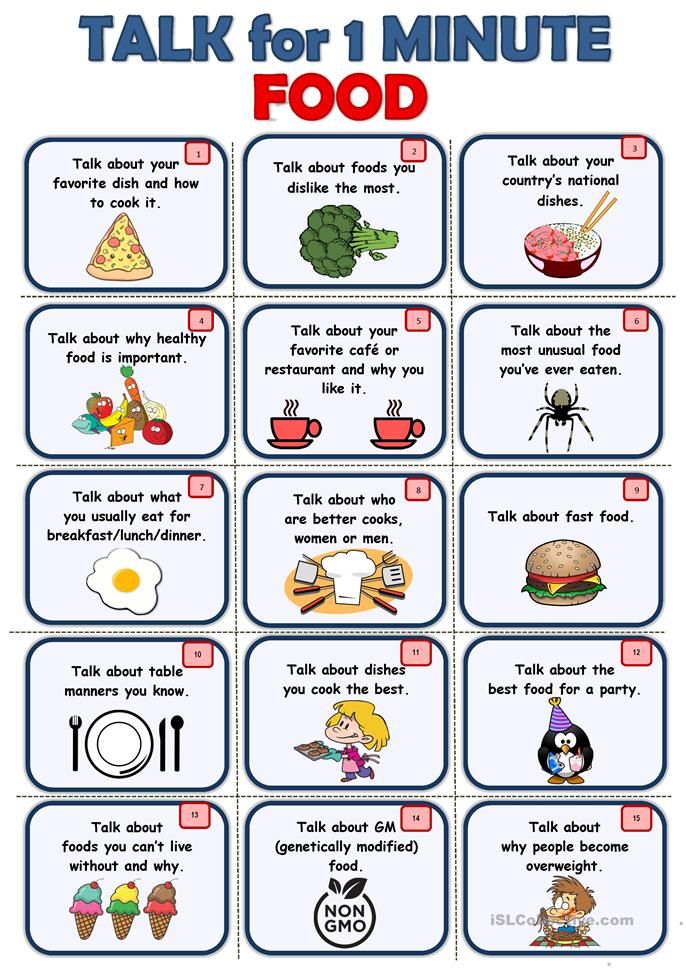 Knowing your ABCs can help you get into a good school or get a good job someday!
Knowing your ABCs can help you get into a good school or get a good job someday!
Learning the alphabet is one of the most important things a child can do in their first few years of life. The sooner they learn it, the more opportunities they will have for success in school and beyond. Here are just a few reasons why:
- It lays a foundation for all reading skills.
- It helps children develop vocabulary and language comprehension as well as spelling and writing skills later on.
- It prepares them for kindergarten by developing fundamental skills like recognizing letters and matching sounds with letters, etc.
Why is phonics important for children to learn early on?
Phonics is a vital skill to learn for children as early as preschool age. This skill will help them read and write better, which in turn helps with their academic performance. In addition, it lays the foundation for lifelong literacy skills that can be used throughout adulthood.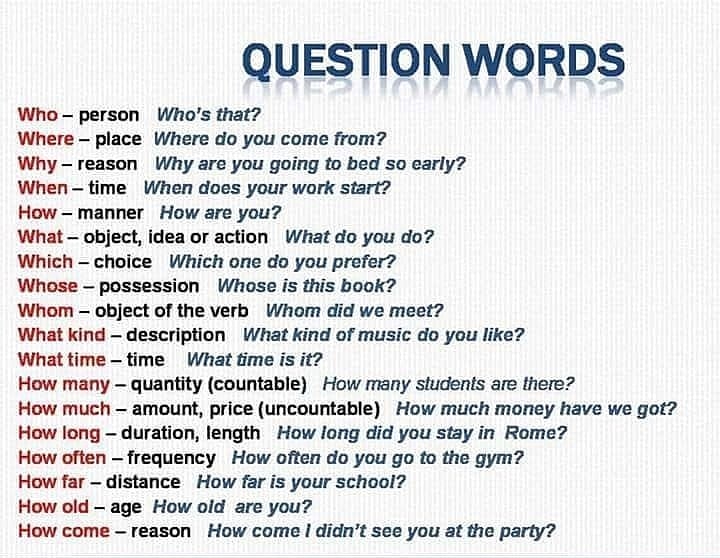 The best way to teach phonics is through interactive reading and writing activities that are designed specifically for the child’s age group.
The best way to teach phonics is through interactive reading and writing activities that are designed specifically for the child’s age group.
“Phonics teaches children how letters and letter combinations represent different sounds.” It may be one of the most important skills for pre-schoolers to learn because it will help them decode words as they start learning how to read. Teaching phonics early on can give a child a head start when it comes to literacy, which has been shown by numerous studies. A study from 2013 showed that students who started this early were more successful four years later than those who started later due to earlier exposure and better understanding.
How can parents help their children with learning the alphabet?
Kids go through a lot of changes as they grow up. From learning to walk and talk, to excelling in school subjects like reading and math, children are constantly growing smarter every day. One important skill that kids need for success is the alphabet.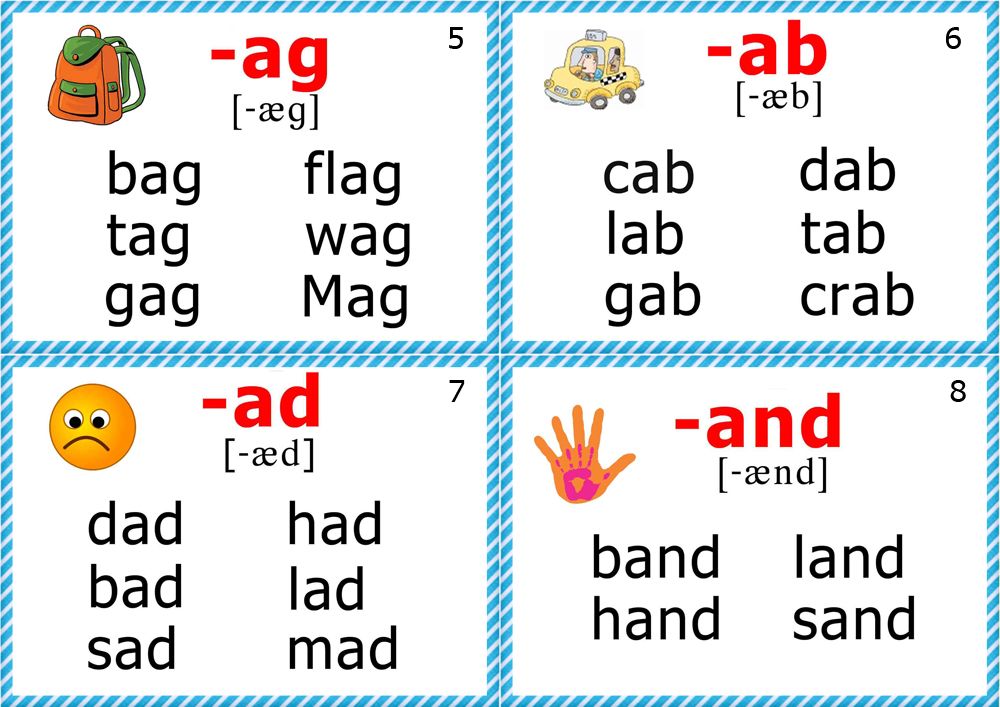 Parents should start with an ABC song at around kids’ 18th months. It will help the kids learn their letters by associating each letter with a word (A=Apple). The next step is teaching phonics, or how sounds make different letters (B=Bee). You can use alphabet puzzles. You can also make your child to write letters. By combining these skills, you can help your child succeed in future classes!
Parents should start with an ABC song at around kids’ 18th months. It will help the kids learn their letters by associating each letter with a word (A=Apple). The next step is teaching phonics, or how sounds make different letters (B=Bee). You can use alphabet puzzles. You can also make your child to write letters. By combining these skills, you can help your child succeed in future classes!
5 Tips for helping your child understand their ABCs
The ABCs are a vital part of every child’s life. But the alphabet is more than just 26 letters. It’s an important set of tools to help your children learn, grow and succeed! Here are some tips for helping your child understand the ABCs so they can be successful in school and life.
The following list includes six tips ensuring that your child understands their ABCs:
1) Make your kid speak the alphabet
Give a book to your kid. Tell them to have a look at them. Then make them read the letters aloud. Continue this process until all 26 letters have been said in the order.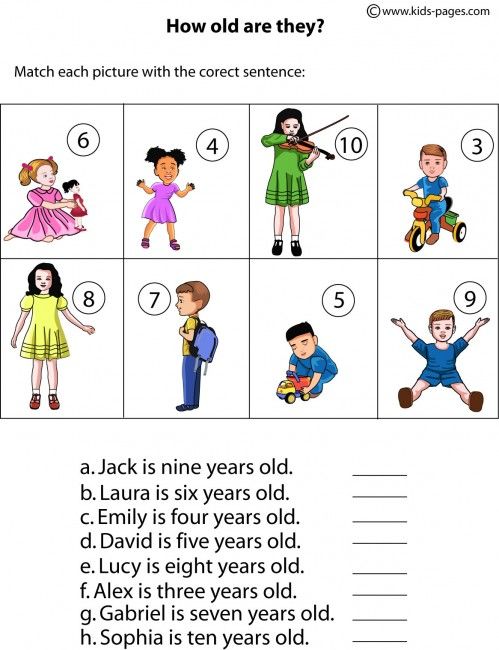 Finally, tell them to repeat the process on their own. If they do any mistakes, correct them. This way they will learn to pronounce the alphabets.
Finally, tell them to repeat the process on their own. If they do any mistakes, correct them. This way they will learn to pronounce the alphabets.
2) Teach them to recognize letter shapes
Let’s be honest, it can be a tedious task trying to remember all 26 letters in alphabetical order. But it doesn’t have to be! Teaching your child about letter shapes can make this process easier for you because you can show them what each letter looks like rather than just saying its name out loud. Make this process as much as interesting as you can.
3) Introduce new letters by matching them with pictures
Here are some great ways to introduce new letters by matching them with pictures that children will love!
- A matched with apple -B matched with baby bear -C matched with Christmas tree, etc.
- The connection of letters and pictures will help the kids to learn the alphabet better.
4) Play games like I Spy or charades
I Spy or charades can help your child with their vocabulary and reading skills.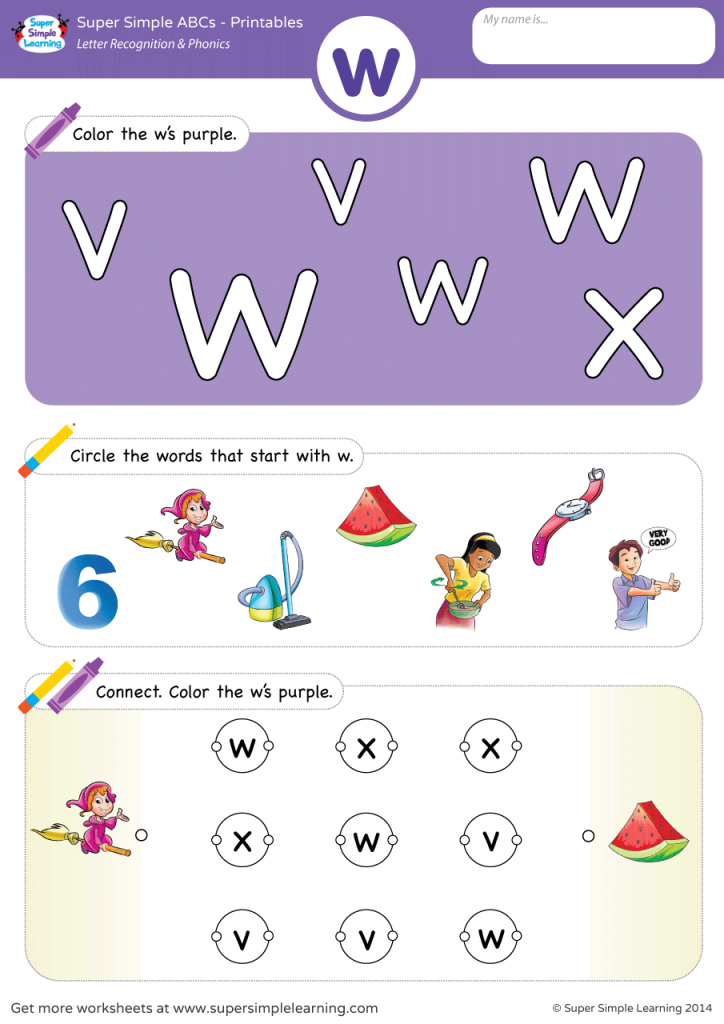 It has been found that children who play these types of games have an increased understanding of words when they are read aloud to them. This is because the process in which they learn how to play such a game mimics what it’s like to read silently.
It has been found that children who play these types of games have an increased understanding of words when they are read aloud to them. This is because the process in which they learn how to play such a game mimics what it’s like to read silently.
Choose one player (or two players) to be the reader. Another player (or two) will be helping by giving clues, singing a song, or making a noise. The goal of the game is for the reader to guess what letters you are thinking about.
5) Make them write their ABCs on paper
To make your child remember more letters, they need to be able to write them down using their creativity and imagination. Make them draw, color, and write the letters in order. They will learn how to spell and which sounds each letter makes when combined with other letters.
Conclusion
Once your child has learned the alphabet, you can teach your little ones how to read by using the alphabet song. Teach them the sound that each letter makes and eventually they will learn how to read!
At what age should children start learning letters? | Answers | Question-Answer
Estimated reading time: 2 minutes
109303
AiF №43. Supernumber: 232 answers to your questions 23/10/2013Q&A from the newspaper: AIF №43 23/10/2013
At what age should children start learning letters?
Answer Maryana Bezrukikh, director of the Institute of Developmental Physiology of the Russian Academy of Education, professor, academician of the Russian Academy of Education:
- At the age of 3-4, a child should not memorize letters. At this age, the structures responsible for distinguishing between alphabetic characters have not yet been formed in the brain. Of course, the child can be trained. If every day you show him a card with the letter "I" and repeat: "And, and, and ...", he will remember. But the monkey will also remember it. For him, this is not a sign, not a letter, but abracadabra.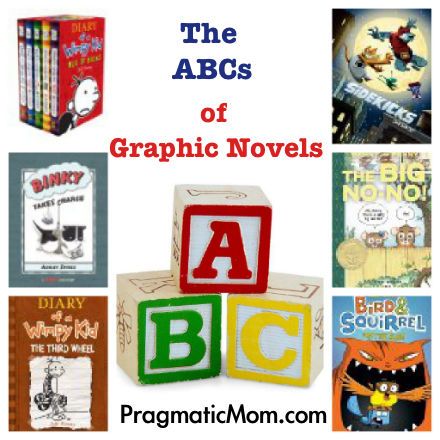 And the further, the worse.
And the further, the worse.
If a child under 4 is forced to read, an inadequate reading mechanism is formed. He grabs the first 2-3 letters with his eyes and guesses the word. I did not guess - I have to return to the beginning. The endless “shuttle” eye movement is tiring, the child loses the meaning of what he has read, and as a result, interest in the book is lost.
The maturity of the brain necessary for reading in most children is formed by the age of 5-6, and only in 20% - by 4-5. Moreover, at 3 years old, the child is not required to know colors. You can tell, but do not demand. At 3-4 years old, you need to broaden your horizons, develop speech, correct pronunciation, learn to answer questions and ask them correctly. Movement is very important - walking, standing, climbing stairs, taking small details, teaching yourself to eat, sing, dance, listen to music, form a sense of rhythm. There are no trifles in the development of a child. Even catering is important - beautifully set the table, put napkins.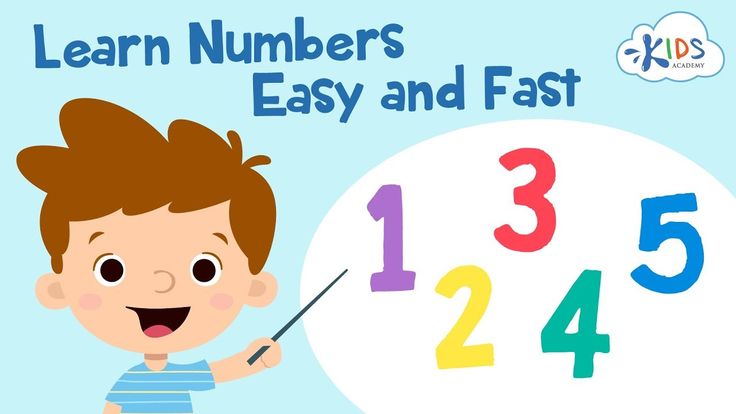 A lot of parents almost never sit down at the table with a child. They try to feed him quickly, then send him to play with toys and sit at the table themselves. This is wrong, just as it is wrong to force you to eat up. This forms an aversion to food.
A lot of parents almost never sit down at the table with a child. They try to feed him quickly, then send him to play with toys and sit at the table themselves. This is wrong, just as it is wrong to force you to eat up. This forms an aversion to food.
See also: How to teach a child to understand the first time? >>>
Next article
You may also be interested in
- Tips for parents: how to instill in a child a love of music?
- Prevention of dyslexia: how to teach a child to read
- Foreign language: children catch language from the air, and adults - how lucky
- The child is lazy: is it so bad?
- Scientists have figured out how to improve the academic performance of children
Media news2
when to start and how to teach
When it's time to send a kid to school, his life enters a completely new phase, from which carelessness ends and everything has to be answered in an adult way.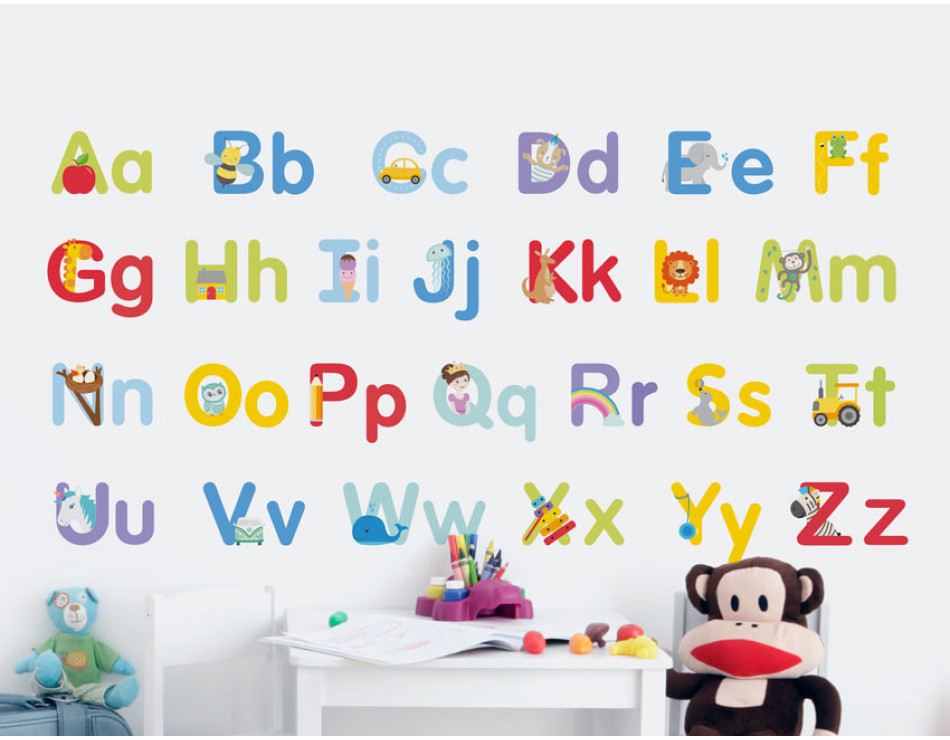 But how the child will perceive the changes that have come: with joy or fear, depends on the mood that parents who have their own idea of education can provide. Here it is very important not to let the novice student get confused, drown in the still unfamiliar sea of classwork, homework and school requirements. The first step to solving the problems that have arisen will be a preliminary study of the alphabet. But how to do it right, so as not to completely discourage the desire to learn?
But how the child will perceive the changes that have come: with joy or fear, depends on the mood that parents who have their own idea of education can provide. Here it is very important not to let the novice student get confused, drown in the still unfamiliar sea of classwork, homework and school requirements. The first step to solving the problems that have arisen will be a preliminary study of the alphabet. But how to do it right, so as not to completely discourage the desire to learn?
In this case, there are no recommendations that are equally effective for all cases of life. This requires an individual approach when you have to pay attention to the developmental features of each individual child. There are times when a baby is ahead of his peers in terms of mental development, and therefore masters the alphabet at 3 years old, or even earlier. If some kids cope with the task easily and quickly, then others may not be ready for the difficulties of learning. Only practice will help answer such questions.
Irrespective of the age at which education starts, there are a number of rules that must be followed:
- study with pleasure;
- activities that bring joy and good mood;
- regularity of training.
Given the age of the baby, one can hardly count on a serious attitude to the process of learning the alphabet. You can’t combine a cheerful mood and joy with study if you rely on boring sitting at the ABC. Only a game can save the case, into which it is necessary to transform the lessons leading to the interest of the preschooler. In this case, it is important to touch on exactly the topic that is most interesting to a particular kid and in many ways resembles his hobby. In this task, there can be no restrictions on the imagination shown by parents who know all the nuances of the behavior and interests of their children.
Learning the alphabet through the game "Cards"
This approach to learning the alphabet will please not only simple, but also effective.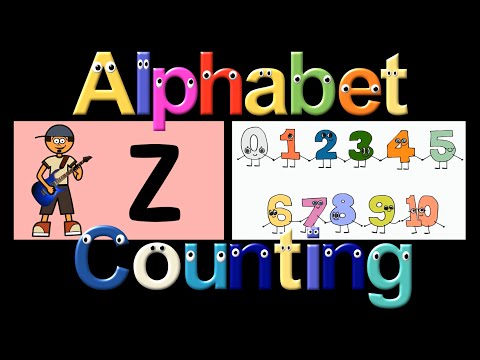 The whole point of this method lies in the love of the kids for bright patterns that complement the letters and words placed on cards with an intricate and colorful design. Through the attractiveness of the picture, the preschooler shows the wonders of visual memory, along with which memorization by ear comes into play. It is this tandem that allows us to achieve the expected results.
The whole point of this method lies in the love of the kids for bright patterns that complement the letters and words placed on cards with an intricate and colorful design. Through the attractiveness of the picture, the preschooler shows the wonders of visual memory, along with which memorization by ear comes into play. It is this tandem that allows us to achieve the expected results.
As for buying these same cards, you can find them in any bookstore or outlet specializing in goods for children. If you wish and have some skills, you can start making cards with the alphabet on your own, or even with the participation of a child.
It can also be helpful when using the alphabet to use toys that a particular child especially likes. In this case, it is necessary to teach the child to substitute cards with letters for toys, focusing on their names. To arouse the increased interest of the baby, do not be afraid to diversify such activities.
A way of learning with the help of the alphabet
Due to the variety of equivalent variants of the same alphabet, you can always choose the analogue that is most suitable for a young individual.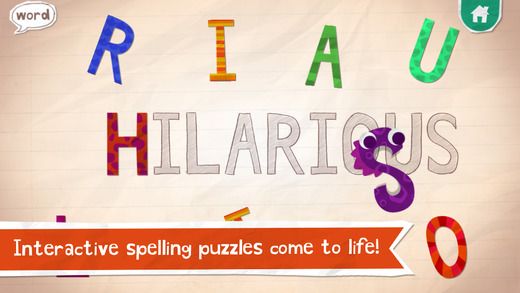 Is your child addicted to music? On sale there are a lot of offers with a musical bias, the diversity of which lies in the difference in the set of components of the corresponding direction. With an increased interest of your descendant in automotive or some other topic, you will also not have to experience special difficulties with searches.
Is your child addicted to music? On sale there are a lot of offers with a musical bias, the diversity of which lies in the difference in the set of components of the corresponding direction. With an increased interest of your descendant in automotive or some other topic, you will also not have to experience special difficulties with searches.
In addition to preventing boredom, parents should avoid being too strict and serious. It would be more correct to play along with your child, which gives him the opportunity not only to feel comfortable, but also to see in the parent not a strict teacher, but his best friend. In order to avoid fatigue, adults need to learn the art of alternating study and rest. Do not want to tightly connect training with hatred for it? Do not force your children to study against their will.
Educational interest materials
There are many different ways to add interest to learning the alphabet. You just need to be ready to discard the hardened old methods and give free rein to the fantasy that diversifies the educational process.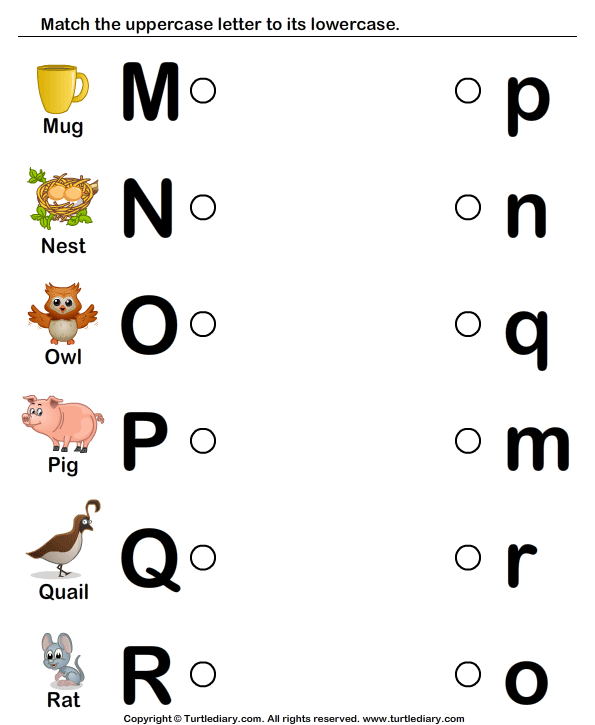 For example: the child will definitely like the composition of poems and songs. Or maybe he will be interested in playing all kinds of scenes?
For example: the child will definitely like the composition of poems and songs. Or maybe he will be interested in playing all kinds of scenes?
Good results will also bring the game with the use of foreign objects. For example: the search for a particular thing, the name of which begins with the letter being studied. The external similarity of objects with the outlines of individual letters can also work on learning the alphabet.
Regardless of the effectiveness of the methods used or games that help to achieve the desired results, the regularity of classes is put in the first place. The lack of consistency in lesson planning inevitably leads to a loss of interest and forgetting the wisdom already mastered.
10 tips to use when learning the alphabet
From letters to the alphabet
One cannot but agree that each child is individual. One kid grasps everything on the fly, while another needs to find a special approach in order to teach even the simplest.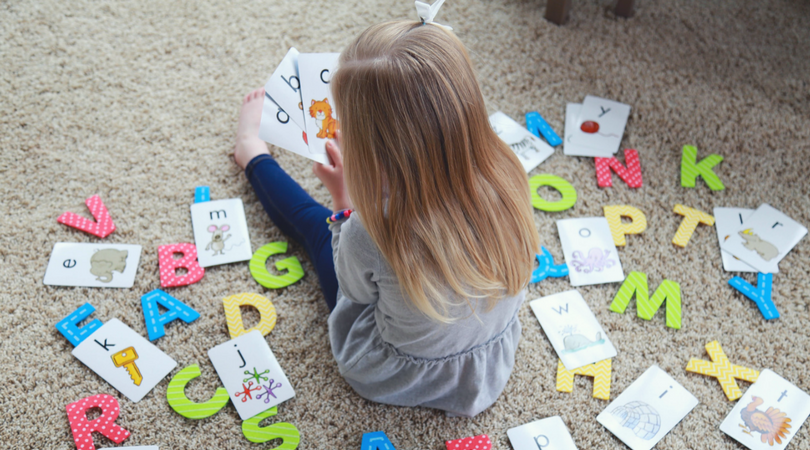 You can start as early as two years old - at this age, kids are inquisitive and quickly remember everything new. But learning should be organized in a playful way.
You can start as early as two years old - at this age, kids are inquisitive and quickly remember everything new. But learning should be organized in a playful way.
The child will fall in love with reading in the future, if you regularly follow the simple rules:
- Read poems, fairy tales, books with your child every day. Well, if he himself wishes to choose literature for today;
- While reading, attention to the letters will be more attracted if you move your finger along the lines;
- Later you can discuss what you have read with your child, ask for his opinion, retell the content yourself or ask him to retell it.
So the baby will be interested in the opportunity to read independently and will ask which letter is which. And to make the learning process interesting, various auxiliary tools will come to the rescue:
- magnetic alphabet;
- color primer;
- interactive poster;
- letter cubes.
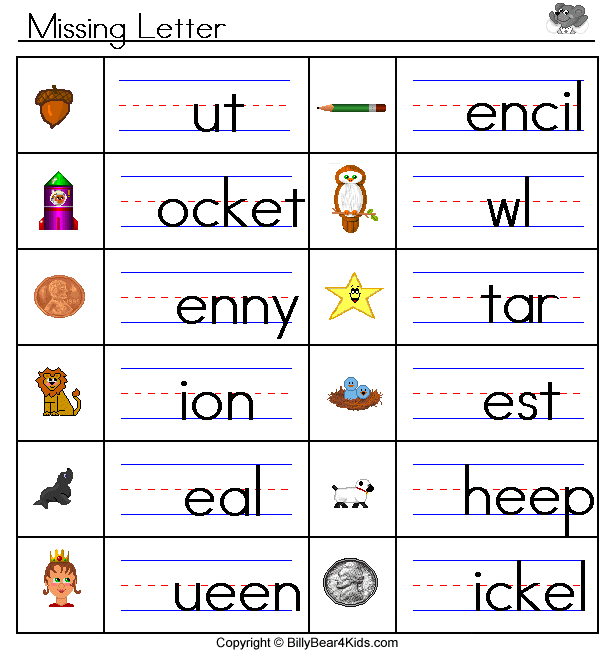
Devoting a certain amount of time every day to learning the letters, very soon the baby will be able to tell the whole alphabet.
But at school it is not enough to know how this or that letter sounds. Children must know the entire alphabet by heart in the correct order. It is often difficult for a child who knows all the letters well to learn the sequence of their placement and how the letter is correctly called. Yes, and parents who have taught the baby all the letters, it seems that learning them in the correct sequence is not an easy task.
This is not entirely true. If a preschooler already knows all the letters and understands that these are not just signs, but they are needed for reading and writing, then with the right approach, it will not be difficult for him to learn the alphabet.
Methods for memorizing letters in alphabetical order
There are many ways to quickly learn the alphabet with your child. For example, you can take the same cards, magnetic board or cubes that were used at the stage of learning letters.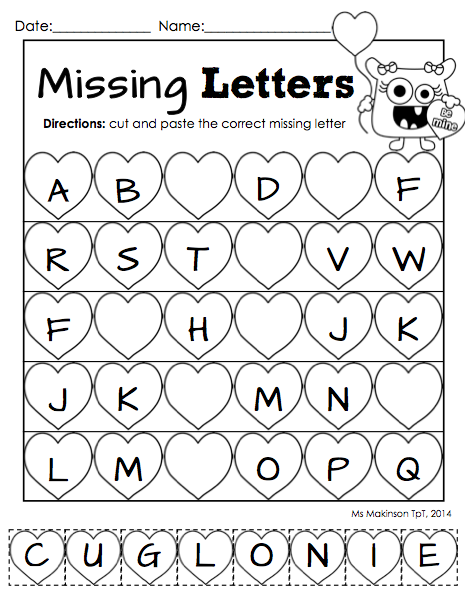 Several times a day, you need to pronounce the entire sequence with the child. If he gets tired quickly or gets bored with the activity, you can divide the alphabet into two parts.
Several times a day, you need to pronounce the entire sequence with the child. If he gets tired quickly or gets bored with the activity, you can divide the alphabet into two parts.
A very simple but effective method is to sing the alphabet. Write down the finished song that the baby liked the most and sing it with him. You can also download your favorite song without words and sing the letters in the correct order instead of verses.
An activity can become a favorite if you make the alphabet with your own hands. The child will be happy to take part in such a serious matter. To do this, together with your mother, cut out all the letters from cardboard and glue them in alphabetical order. If desired, the work can be decorated with pictures and drawings. The kid will proudly show his work to his family and friends and he will want to quickly learn and tell which letter follows which.
Success in this matter will come quickly if the classes are held under the following conditions:
- the child is not hungry;
- he is in a good mood;
- he slept well, not tired.

In any case, the child should have fun doing it. You can’t scold him if you don’t immediately manage to remember the material, this can discourage the desire to learn for a long time. If the crumbs succeed, if there is a first result, you must definitely praise him. Then he will happily continue his studies and soon, quickly and without errors, he will tell the entire alphabet from “A” to “Z”.
What to do if the alphabet is difficult?
All children are completely different, you need to find your own approach to each. If the child categorically refuses to learn the alphabet, then it is worthwhile to postpone the classes and return to them later, when he is ready. During this period, it is worth trying several teaching methods. It’s good when parents and children go to educational stores together, because a new alphabet with three-dimensional letters and colorful pictures or a puzzle mat can really please the baby and become a good helper for classes.
Create an appropriate learning environment in the children's room.
A bright alphabet poster or decorative pillows with letters will always be in front of the baby, and it will be easier for him to master the sequence of letters. And psychologists also believe that the material is absorbed more efficiently if it is highlighted in red.
Unfortunately, it often happens that parents do not have the opportunity or fail to learn the alphabet with their child on their own. In such cases, it is worth taking a closer look at good teaching aids. A series of educational cartoons on disks will come to the rescue. At the same time, do not forget that the time in front of a computer or TV for children should be strictly metered. The format of training in the form of a cartoon will hold the attention of a young student for a long time. And this means that the material will be learned well.
The choice of such lessons is now huge, for example, the developing course "Learning to read", by Robert Saakyants. Throughout the lesson, the child watches with interest how the wise owl teaches the sequence of letters of the alphabet and teaches the little bunny to read.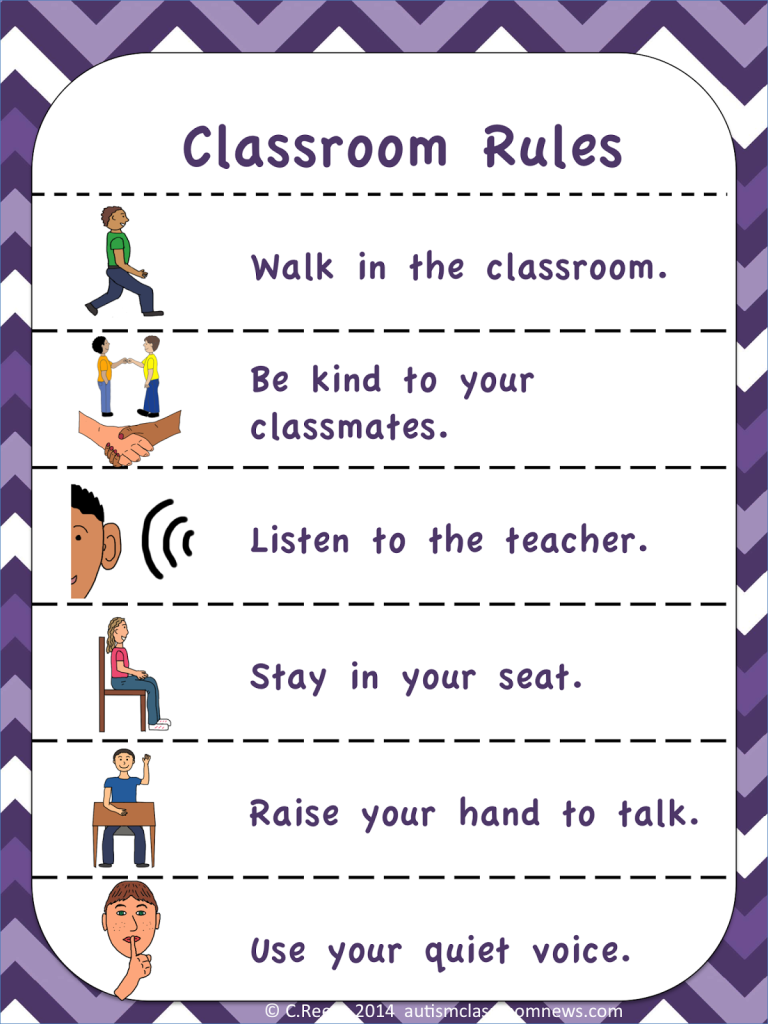 As practice shows, this type of training is very interesting and effective for the child.
As practice shows, this type of training is very interesting and effective for the child.
A variety of online classes are all kinds of alphabet simulators.
It is not uncommon for a child to memorize letters in alphabetical order by writing them from dictation. Of course, provided that the child knows the letters and can write them at all. It will be more pleasant to write them with colored pencils, felt-tip pens or paints. You can also practice while walking: a stick, sand or colored crayons will do just fine. It is better to alternate approaches and teaching methods, so the baby will not tire of classes.
If you want to help your child learn all the letters and the alphabet as early as possible, do not forget that learning can start when:
- the child pronounces sounds well;
- his vocabulary allows him to adequately express his thoughts and needs;
- uses full common sentences in colloquial speech;
- likes to listen when adults read to him and tries to “read” on his own.
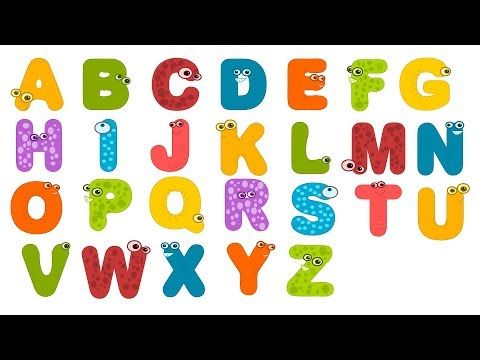
If a child loves music, then a song will help him to memorize the alphabet well:
Thirty-three sisters,
Written beauties,
They live on the same page,
And they are famous everywhere!
They are in a hurry to you,
Glorious sisters,
They ask all the guys very much
Make friends with them!
A, Bae, Ve, Ge, De, E, Zhe -
Rolled on a hedgehog.
Ze, I, Ka, el, em, eN, O -
Together they climbed out the window.
Pe, er, es, Te, U, eF, Xa -
Rooster saddled.
Tse, Che, Sha, Shcha, E, Yu, I -
All are now my friends.
Five sisters were late -
Played hide-and-seek.
And now all the letters are up
In alphabetical order.
Get to know them, children:
Here they are standing in a row.
It is very bad to live in the world
For those who are unfamiliar with them.
Memorize the alphabet better by playing. To do this, you can try different lessons-games:
- Children who love to play pantomime will enjoy learning in the form of their favorite game.
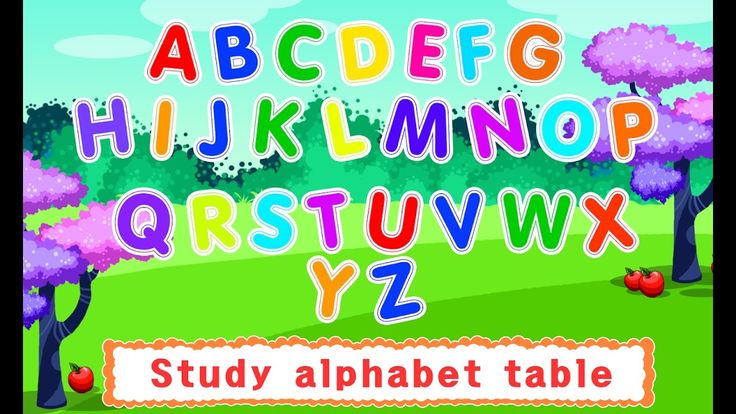 To do this, they must draw each letter in order in an interesting and funny way.
To do this, they must draw each letter in order in an interesting and funny way.
- Using the alphabet, the child must find an object from the environment, the name of which begins with each subsequent letter.
- Those who like to draw will love the game of "living letters". With the help of parents, the child creates his own alphabet, where each letter is drawn in order. At the same time, the letters are different: each has its own “character”.
- You can give a little student an interactive game "Letters of the Russian alphabet". When the child connects the letters one after the other in the correct order, the picture “comes to life” at the end. At the same time, by clicking on each letter, the child will quickly remember how to pronounce it correctly.
- The letter hunt game can help you learn the alphabet sequence. It is interesting to play with several children at the same time. To do this, you need old newspapers or magazines, as well as scissors and an album.
 The first child to find, cut and paste all the letters in the correct order wins. If the children do not yet know the alphabet very confidently, then you can let them peep.
The first child to find, cut and paste all the letters in the correct order wins. If the children do not yet know the alphabet very confidently, then you can let them peep.
The alphabet is the foundation of literacy. Therefore, children need to be helped to master the letters, sounds, and also call them in alphabetical order. And for this it is not necessary to buy expensive textbooks or special programs. Learning the alphabet with a child, and at the same time refreshing it in memory by yourself, is quite within the power of every parent.
You may find the title of this article immodest and the author presumptuous. Perhaps you think that the author used such a title in order to attract the attention of readers.
Yes, it is. The purpose of this title is to draw your attention to the really most effective way to teach your child the letters of the Russian alphabet in the shortest possible time and teach him to pronounce these letters with sounds.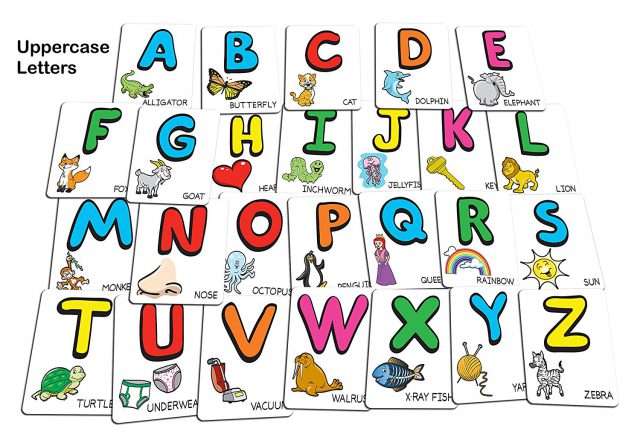 You will see for yourself the simplicity and effectiveness of this method by reading this article and starting to teach your child letters with its help. After five lessons, your child will know all 10 vowels well and begin to memorize consonants, even if before that he did not know a single letter. And, most importantly, he will learn letters in the process of games and will remember them firmly.
You will see for yourself the simplicity and effectiveness of this method by reading this article and starting to teach your child letters with its help. After five lessons, your child will know all 10 vowels well and begin to memorize consonants, even if before that he did not know a single letter. And, most importantly, he will learn letters in the process of games and will remember them firmly.
But first, a small digression. Before you start teaching your child letters, you must decide what he needs it for. Some parents are proud that they managed to teach letters to a two-year-old or even a one-and-a-half-year-old child. But this is worth doing only if at the same time you begin to teach your child to read. Any knowledge should immediately find its practical application. And teaching letters in itself, without simultaneous learning to read, does not make sense. There are many other, equally effective, ways to develop a child's memory and stimulate the brain during the formation period.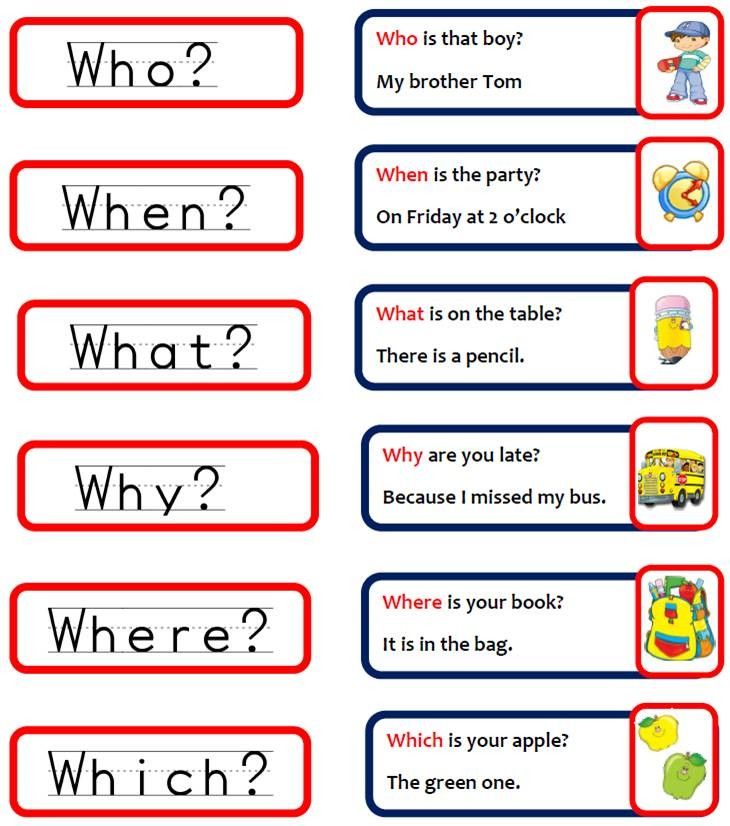 It’s good if, by the beginning of learning to read, the child forgets these prematurely learned letters and does not pronounce them the way he was once taught: Bae, Ve, Ge ... or By, You, Gee ..., otherwise when reading it it will bother him a lot. You ask: "Well, if you teach a child letters and reading at the same time, then at what age is it better to start, is it already possible from two years old?" I believe that at home, in the family, a mother with a child of this age can already do; but first for half a minute, and then for several minutes during the day. As a result of such “lessons”, built in the form of a game, the child will develop the ability to concentrate on a particular lesson, and then, starting from the age of three and even a little earlier, he can be taught to read in a group of children like him. Just do not forget that learning to read, and especially early, should take place without coercion, in the game, against the backdrop of positive emotions.
It’s good if, by the beginning of learning to read, the child forgets these prematurely learned letters and does not pronounce them the way he was once taught: Bae, Ve, Ge ... or By, You, Gee ..., otherwise when reading it it will bother him a lot. You ask: "Well, if you teach a child letters and reading at the same time, then at what age is it better to start, is it already possible from two years old?" I believe that at home, in the family, a mother with a child of this age can already do; but first for half a minute, and then for several minutes during the day. As a result of such “lessons”, built in the form of a game, the child will develop the ability to concentrate on a particular lesson, and then, starting from the age of three and even a little earlier, he can be taught to read in a group of children like him. Just do not forget that learning to read, and especially early, should take place without coercion, in the game, against the backdrop of positive emotions.
How to quickly and correctly learn the alphabet with your child.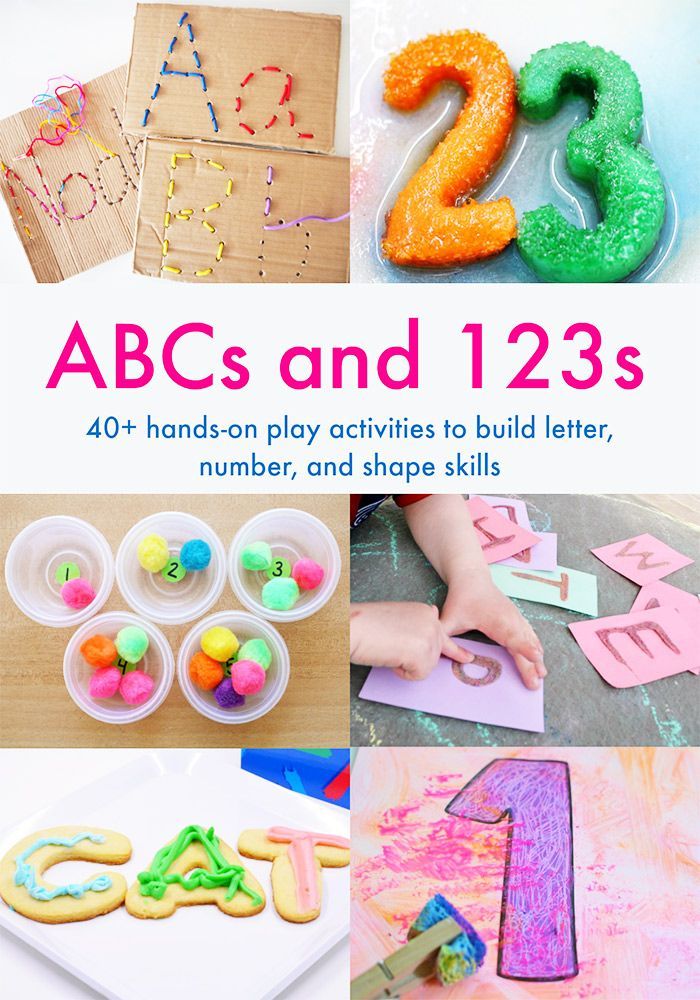 Tips and rules for learning the alphabet. Interesting tricks for learning letters at different ages (from 3 to 6 years). Techniques for memorizing letters.
Tips and rules for learning the alphabet. Interesting tricks for learning letters at different ages (from 3 to 6 years). Techniques for memorizing letters.
All parents sooner or later face such tasks: how to teach a child the alphabet, how to do it correctly so as not to discourage the child from wanting, and what methods are best to use.
Some children begin to recognize letters between the ages of 2 and 3 and can identify most letters by age 4. This means that you can start learning the alphabet with your child when he is about 3 years old. Of course, you should not expect that the child will immediately remember a lot of letters, this will take time.
Doctors and teachers believe that it is best to learn letters after 3 years. From this age, children have increased curiosity and ability to learn.
But since each baby develops individually, parents should seize this moment. If there are problems with stuttering, with the pronunciation of sounds, then it is better to wait.
There are a few rules that will help you prepare for learning the alphabet:
- let the child choose the book you will read and turn the pages himself;
- carefully examine and discuss pictures;
- Discuss the reading, have the child retell the story.
It is recommended to use methods that can attract the attention of the child, since interest makes it easier to learn and remember. It is important to praise the baby and in no case should you scold. Classes should be held at the same time, regularly, in order to develop a habit.
There is a general instruction for learning letters in the alphabet:
First, it is better to start learning letters from simple ones and those that are most often used, gradually moving on to rare and complex ones.
Secondly, one letter in a couple of days will be enough for a baby. You can fix the result with the help of cards with objects cut out of paper or fabric of letters molded from plasticine. In order for the child to forget a previously learned letter, it is worth starting each lesson with a repetition.
In order for the child to forget a previously learned letter, it is worth starting each lesson with a repetition.
Third, parents can tell their child what the letter looks like, read short poems about it, or sing a song.
Learning the alphabet at 3 years old
The first step in teaching the alphabet to a three year old is to get him interested. More often he begins to show interest in letters while reading. The task of mom and dad is to support this interest. By this age, the baby has favorite fairy tales, poems (if parents read a lot of books to him). There is a motivation to master the alphabet in order to read it yourself in the future. Best of all at the age of three, children remember the first letter of the name, the letters A, B and C.
So, how to teach a child letters:
First, you can use blocks with letters drawn on them, cards, magnetic alphabet, various posters and stickers.
Secondly, parents and their child should draw letters on paper, on a blackboard, or on asphalt.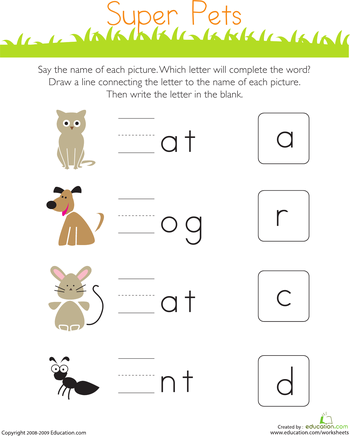 This will help you remember the letters faster.
This will help you remember the letters faster.
Thirdly, you can fold letters from various household items, such as buttons, sticks, and so on. Such an activity will be useful not only in terms of learning the alphabet, but will also allow you to develop fine motor skills.
The main rule is that the alphabet is studied one letter at a time.
It is important to remember that a child at the age of 3 should not be forcibly forced and forced to learn letters - this can discourage all interest and desire, and in the future it will be harder to teach a child letters.
Learning the alphabet at 4 years old
Classes with a four-year-old child are carried out in the same way as for a three-year-old child. Games are again used to learn letters. You can continue to add letters from objects.
Parents must include new games. It can be: “Magic bag”, “Find pictures”. The first game: letters are cut out of cardboard into a bag. The kid sticks his hand in there and, without looking, determines the chosen letter.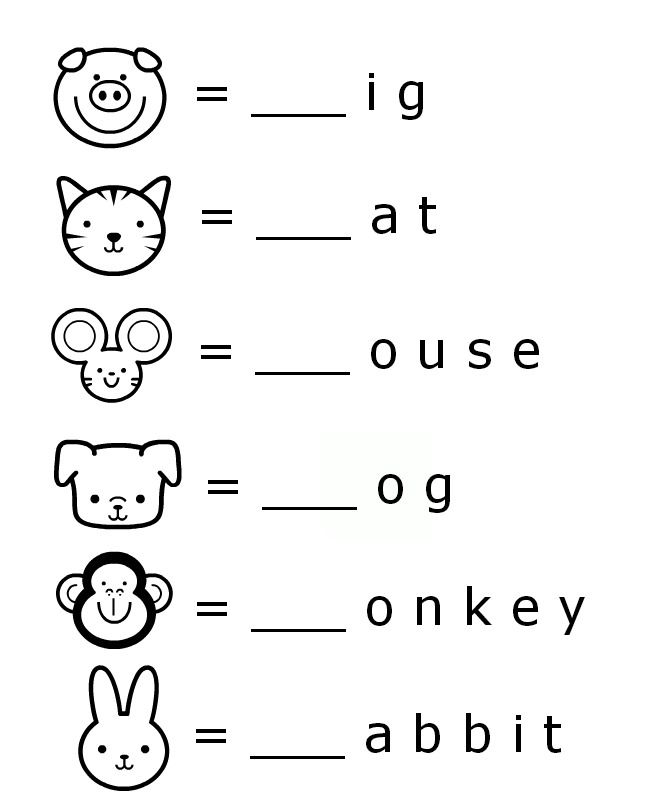 Then he takes it out and checks if he named it correctly.
Then he takes it out and checks if he named it correctly.
In the second game, a set of pictures is used, with objects depicted on them and starting with different letters. 3-4 pictures and a certain letter of the alphabet are laid out, and the child looks for the depicted objects starting with it.
Learning the alphabet at age 5
At the age of 5, the child already consciously shows an interest in reading. He understands that letters can form words, and words can form sentences. A five-year-old kid can independently, without prompting from parents, use improvised objects to make letters, sculpt them from plasticine.
Electronic primer at this age will be very useful - it will interest and captivate the child. In this case, it is very important to choose the right primer. The letters should be pronounced as the sounds denoting them (not "er", but "r" or not "en", but "n").
For four- and five-year-old children there is a special workbook “Learning Letters”, which they can use together with their parents or independently.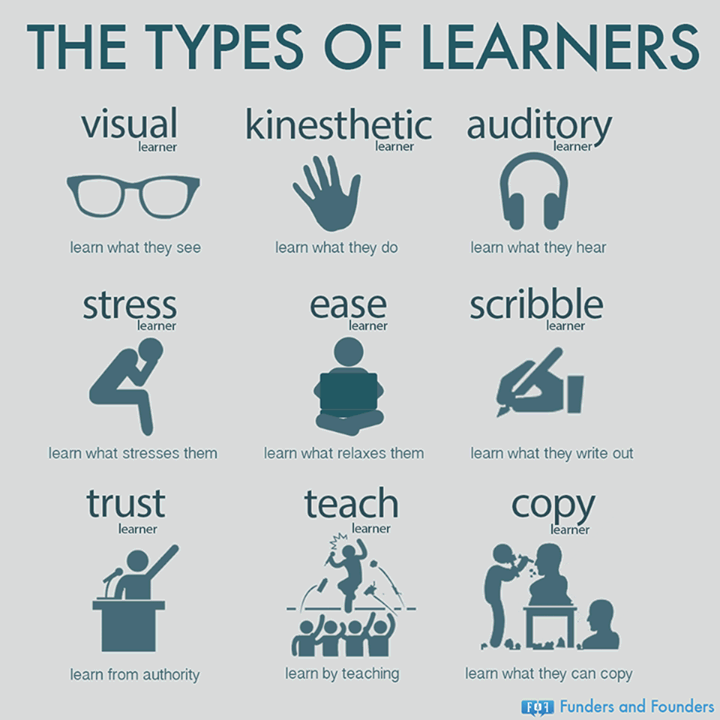
At this age, the main thing is that the child speaks correctly and coherently. To do this, parents should ask the child to tell something, for example, what he did today, let him retell his favorite fairy tale, and so on.
Learning the alphabet at 6 years old
6 years is the best time to memorize the alphabet and start reading. Therefore, parents should not worry too much if before that their baby did not show any desire to learn letters. At 6 years old, the alphabet is much faster than at 3 years old.
In this case, primers, magnetic alphabet can be used for classes, prescriptions will be useful. You can watch with your child special cartoons that teach letters. Now there are many useful applications for smartphones, sites with educational games on the Internet that help a child learn the alphabet.
The whole family can create an author's primer. To do this, you need to draw or cut out a letter and a picture depicting an object with this letter from paper.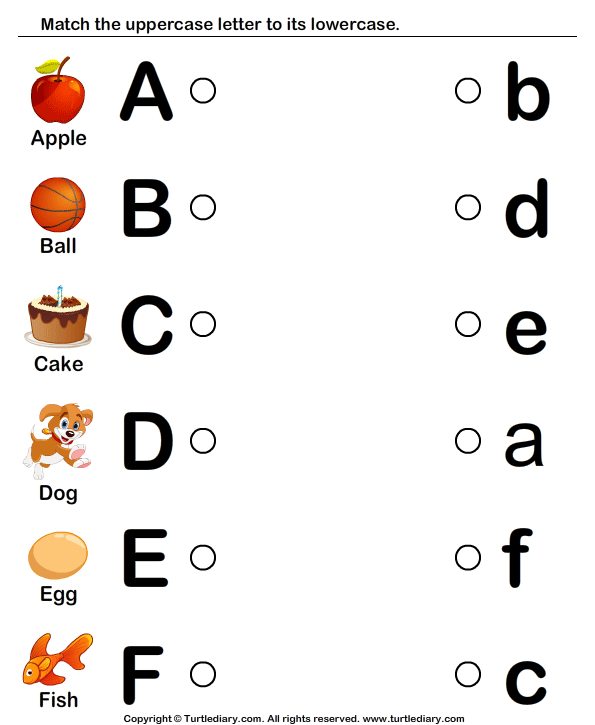 Then glue them on the page in the sketchbook. The child will love this work.
Then glue them on the page in the sketchbook. The child will love this work.
Sequential lessons with the use of the primer contribute to the fact that in parallel with the study of the alphabet, a six-year-old child learns to read.
So, the main rules of how to teach a child letters:
- In order for a child to learn the alphabet, parents should not force them to study.
- The most favorable for the study of letters is a game form of learning.
- It is worth starting classes when the child has an interest in letters.
- The best way to learn the alphabet is for parents to arouse the child's curiosity.
- It is worth choosing interesting games that the child will sincerely want to play.
- If the child is not interested, he does not want to play with letters, then in this case the parents should postpone the lessons, because the child is not yet ready for this.
- It is very important to reinforce learned material.
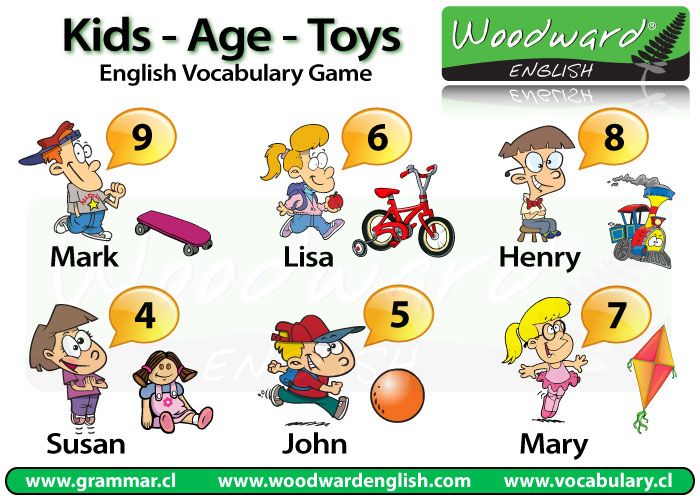 Parents should ask the child to name the letters that are in the surrounding objects. Let him draw them himself.
Parents should ask the child to name the letters that are in the surrounding objects. Let him draw them himself.
Now you have learned how to help your child learn the alphabet. Remember, you should not demand more from him than he can remember. And even if something does not work out for him, do not scold. Pay attention to the mood of the child, if he is tired. Your baby will be able to easily remember all the letters if you take into account the tips given in the article.
Skills such as reading and writing are used by most adults on a daily basis without thinking. But once each of us got acquainted with the wonderful world with a child of 5 years old and is it worth starting learning the alphabet at an earlier age?
When is it time to get acquainted with letters?
The topic of early development is incredibly popular these days. Many supporters of learning from the cradle advise introducing babies to the alphabet no later than the first birthday.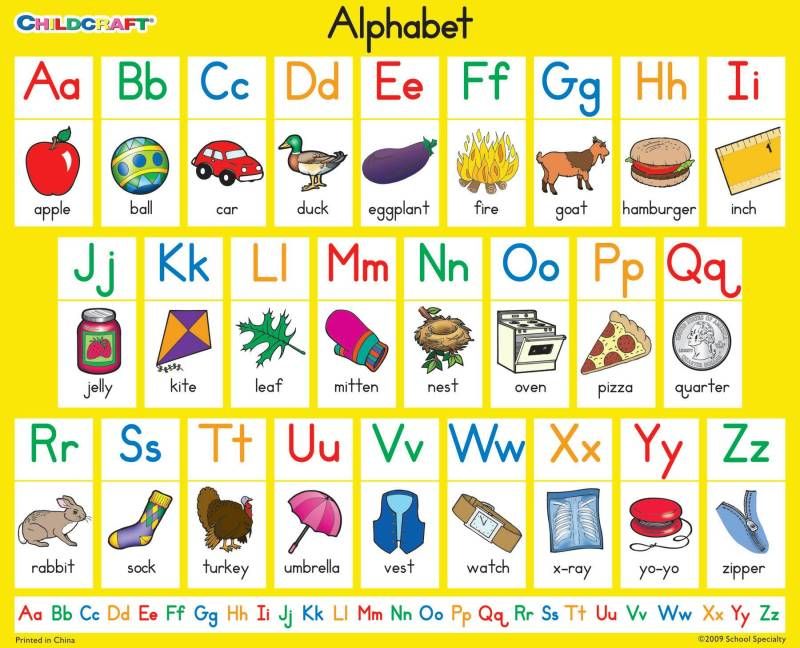 Indeed, almost all children at an early age are real geniuses. With regular classes, by the age of 2, a child can be taught a lot. But remember that without regular repetition of the material covered, the baby will soon forget it.
Indeed, almost all children at an early age are real geniuses. With regular classes, by the age of 2, a child can be taught a lot. But remember that without regular repetition of the material covered, the baby will soon forget it.
At what age is it most useful to learn letters? The best option is to start studying at about 4-5 years old. It is at this age that the baby has a rich vocabulary and knows a lot about the world around him. After learning the alphabet with him, you can move on to the basics of reading and writing. Regularly using the acquired knowledge and deepening it, the child will definitely not forget the letters.
Secrets of successful learning of the alphabet
Any activities with a preschooler are productive only if the student is interested. Before introducing the baby to the world of letters, he should be interested in this topic. Try to read to your child more often. Talk about how, having learned the alphabet, he will be able to read any book or even his father's newspaper.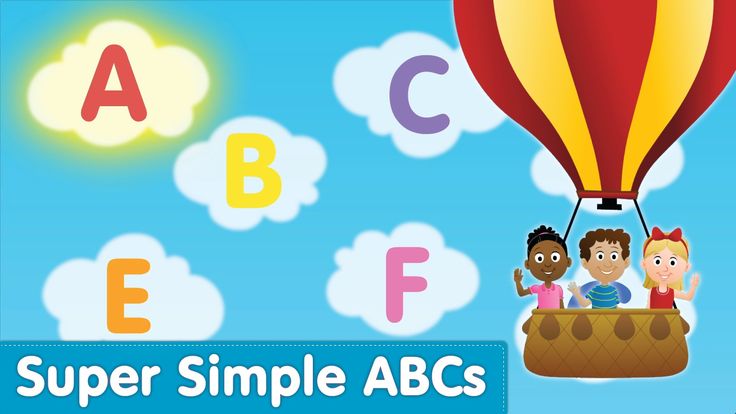 It is also useful to remind from time to time that you can read not only exciting stories, but also useful encyclopedias. And most importantly - inspire the child by personal example. Almost always in families where adults read books, kids learn to write and read with great pleasure.
It is also useful to remind from time to time that you can read not only exciting stories, but also useful encyclopedias. And most importantly - inspire the child by personal example. Almost always in families where adults read books, kids learn to write and read with great pleasure.
How to learn the alphabet with a 5 year old, you ask? Start with games that introduce letters. Do not try to organize classes like school lessons, most likely the child will be bored. Teachers also do not recommend forcing kids. If learning becomes a duty, interest in it is unlikely to continue.
Creating the right learning environment
It is useful to use to facilitate the process of assimilation of new information Add some letters to the interior of your own apartment and children's room. You should not turn the whole house into one continuous alphabet, the baby can get tired of an overabundance of information. Letter puzzle rug, decorative pillows with the name of the child, large clear inscriptions in the interior in moderation are incredibly good.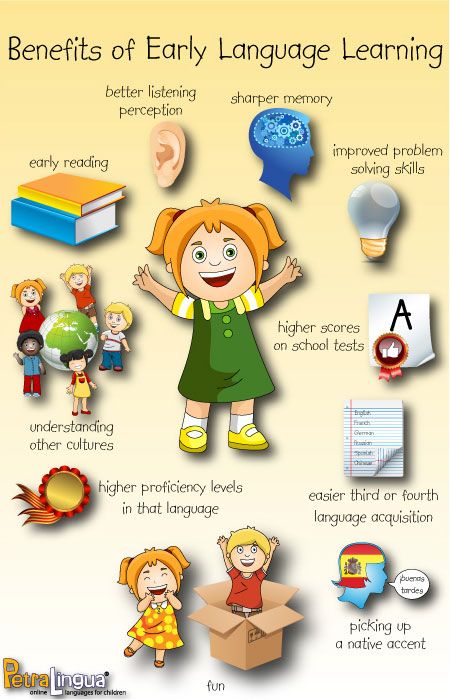 Watching such details every day, the baby will begin to show interest in them on his own. And this is a great opportunity for parents to talk about the letters and name each of them.
Watching such details every day, the baby will begin to show interest in them on his own. And this is a great opportunity for parents to talk about the letters and name each of them.
Do you know the correct pronunciation of the Russian alphabet for children? Many modern experts advise learning not the names of letters, but sounds. This is necessary so that later it will be easier to teach the child to read. The simplest are vowels, consisting of one sound. And the most difficult are hissing consonants and vowels, consisting of two sounds. Don't try to learn the whole alphabet at once. It is much more productive to master 4-6 letters, and then move on to the next group.
Fast memory associations
Toddlers pay attention to objects and images in bright colors that they think are attractive. It is believed that the letters of the alphabet for children should be written in red. You can make them stylized, draw eyes or turn them into real animals. Learning such an alphabet will be much more interesting than the usual one.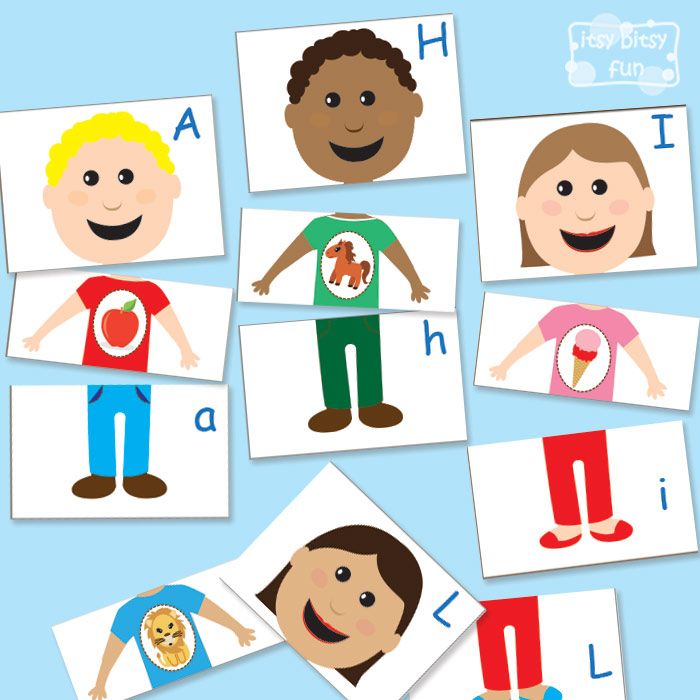
One of the classic teaching aids for preschool children is letters with pictures. The task of parents, when using it, is to explain that the letter character denotes the first sound of the word depicted graphically. The alphabet in pictures should be in every kid who is just getting acquainted with the world of letters. Pick up an alphabet book in a similar design, cubes or cards. If desired, such a manual can be made by hand. Cut out cards of suitable size from thick cardboard and draw or paste letters and pictures on them.
Writing letters
The easiest way to help your child repeat and remember letters is to ask them to write them. At the beginning of the lesson, invite the child to repeat what the mother draws. As you memorize the letters, ask them to reproduce them from memory. You can draw with colored pencils, felt-tip pens or paints. Encourage your child to use chalk to write letters on a special board or outdoors. A fun alphabet can be drawn with special paints in the bathroom on the tiles while swimming.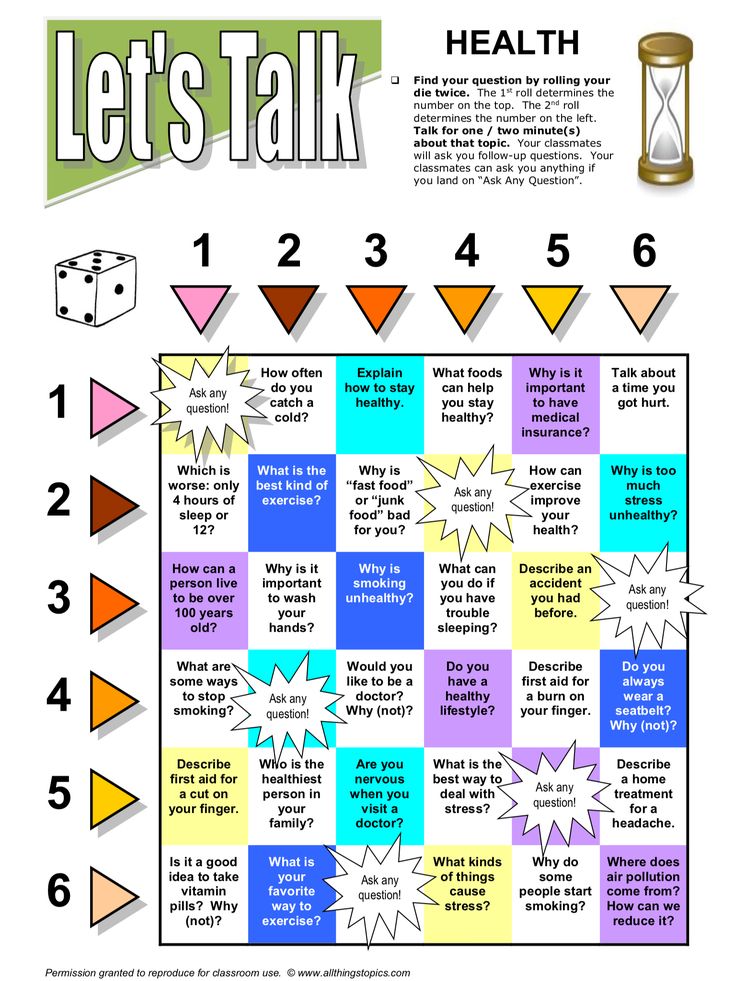 On a walk, offer to write with a twig in the snow or sand.
On a walk, offer to write with a twig in the snow or sand.
Despite their simplicity, these activities are incredibly effective. Alternate materials and techniques for writing letters, and then your baby will be happy to study every day.
Educational creativity
Do you know that letters can not only be written? Try to make them using various techniques: sculpt from plasticine, cut out from paper. How to learn the alphabet with a child 5 years old yet? One of the most enjoyable and effective ways is to invite the baby to make his own alphabet. The smallest can simply color in large printed or painted letters.
Another kind of creativity, loved by all children without exception, is appliqué. Invite your child to stick the letters cut out of colored paper on the background sheet or collect them from separate strips. You can also draw the desired shape on the base and glue it with small multi-colored pieces of paper.
Experiment and create with different techniques.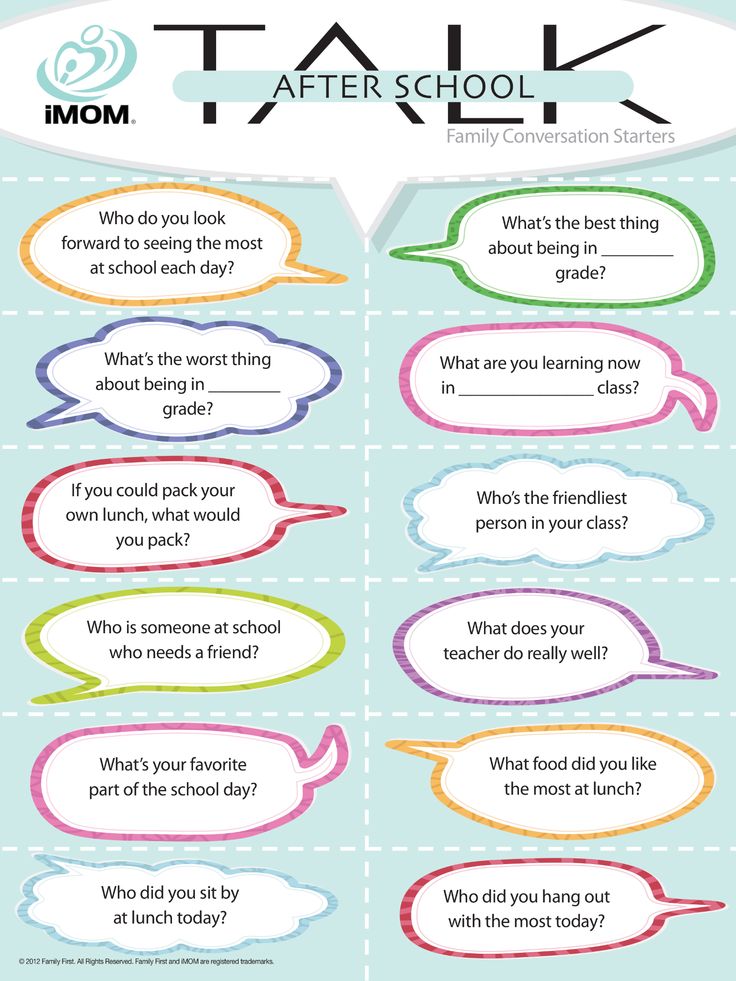 Make all the letters, and hang the resulting cheerful alphabet in a conspicuous place and repeat from time to time.
Make all the letters, and hang the resulting cheerful alphabet in a conspicuous place and repeat from time to time.
Repetition is the mother of learning
No less effective than directed classes is the repetition of the material covered between times. Try to read fairy tales to your child every day. Draw your child's attention to the highlighted capital letters and name them. Many children enjoy looking at magazines and catalogs. Offer to look for the most if desired, they can even be cut out and then used for applications or composing words. Find poems and songs about the alphabet and learn them with your baby. You can also come up with fairy tales together, the main characters of which will be letters. It is easy to repeat the alphabet while walking or shopping. We see bright signs and advertising posters at every step. Read them together or name individual letters.
Useful alphabet learning aids
Today you can find many aids and themed toys for teaching alphabets to kids.